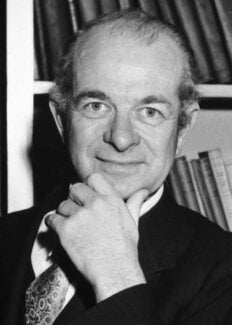Linus Pauling
Biographical

Linus Carl Pauling was born in Portland, Oregon, on 28th February, 1901, the son of a druggist, Herman Henry William Pauling, who, though born in Missouri, was of German descent, and his wife, Lucy Isabelle Darling, born in Oregon of English-Scottish ancestry.
Linus attended the public elementary and high schools in the town of Condon and the city of Portland, Oregon, and entered the Oregon State College in 1917, receiving the degree of B.Sc. in chemical engineering in 1922. During the years 1919-1920 he served as a full-time teacher of quantitative analysis in the State College, after which he was appointed a Teaching Fellow in Chemistry in the California Institute of Technology and was a graduate student there from 1922 to 1925, working under Professor Roscoe G. Dickinson and Richard C. Tolman. In 1925 he was awarded the Ph.D. (summa cum laude) in chemistry, with minors in physics and mathematics.
Since 1919 his interest lay in the field of molecular structure and the nature of the chemical bond, inspired by papers by Irving Langmuir on the application of the Lewis theory of the sharing of pairs of electrons between atoms to many substances. In 1921 he suggested, and attempted to carry out, an experiment on the orientation of iron atoms by a magnetic field, through the electrolytic deposition of a layer of iron in a strong magnetic field and the determination of the orientation of the iron crystallises by polishing and etching the deposit, and microscopic examination of the etch figures. With Professor Dickinson, he began in 1922 the experimental determination of the structures of some crystals, and also started theoretical work on the nature of the chemical bond.
Since his appointment to the Staff of California Institute of Technology, Professor Pauling was elected Research Associate in 1925; National Research Fellow in Chemistry, 1925-1926; Fellow of the John Simon Guggenheim Memorial Foundation, 1926-1927 (through this last he worked in European Universities with Sommerfeld, Schrödinger, and Bohr); Assistant Professor of Chemistry, 1927-1929; Associate Professor, 1929-1931; Professor, 1931, when he was the first recipient of the American Chemical Society Award in Pure Chemistry – the Langmuir Prize – and Chairman of the Division of Chemistry and Chemical Engineering, and Director of the Gates and Crellin laboratories of Chemistry, 1936-1958. In 1963, he was awarded the Nobel Peace Prize.
Pauling is a member of numerous professional societies in the U.S.A. as well as in many European countries, India, Japan and Chile. Awards, medals, and honorary degrees were showered upon him in America and Europe, and in addition he was elected Rationalist of the Year for 1960 and Humanist of the Year for 1961. Several books have come from his pen, ranging from his most famous one The Nature of the Chemical Bond, and the Structure of Molecules and Crystals (1939, 1949, 1960) via General Chemistry (1947, 1953), which was translated into nine languages, to No More War! (1958, 1959,1962).
The subjects of the papers he published reflect his great scientific versatility: about 350 publications in the fields of experimental determination of the structure of crystals by the diffraction of X-rays and the interpretation of these structures in terms of the radii and other properties of atoms; the application of quantum mechanics to physical and chemical problems, including dielectric constants, X-ray doublets, momentum distribution of electrons in atoms, rotational motion of molecules in crystals, Van der Waals forces, etc.; the structure of metals and intermetallic compounds, the theory of ferromagnetism; the nature of the chemical bond, including the resonance phenomenon in chemistry; the experimental determination of the structure of gas molecules by the diffraction of electrons; the structure of proteins; the structure of antibodies and the nature of serological reactions; the structure and properties of hemoglobin and related substances; abnormal hemoglobin molecules in relation to the hereditary hemolytic anemias; the molecular theory of general anesthesia; an instrument for determining the partial pressure of oxygen in a gas; and other subjects.
Pauling married Ava Helen Miller of Beaver Creek, Oregon, in 1923. She is of English-Scottish and German descent. They have four children, Linus (Carl) Jr. (1925), Peter Jeffress (1931), Linda Helen (1932) and Edward Crellin (1937), and thirteen grandchildren.
This autobiography/biography was written at the time of the award and first published in the book series Les Prix Nobel. It was later edited and republished in Nobel Lectures. To cite this document, always state the source as shown above.
Linus Pauling died on August 19, 1994.
Nobel Prizes and laureates
Six prizes were awarded for achievements that have conferred the greatest benefit to humankind. The 14 laureates' work and discoveries range from quantum tunnelling to promoting democratic rights.
See them all presented here.
